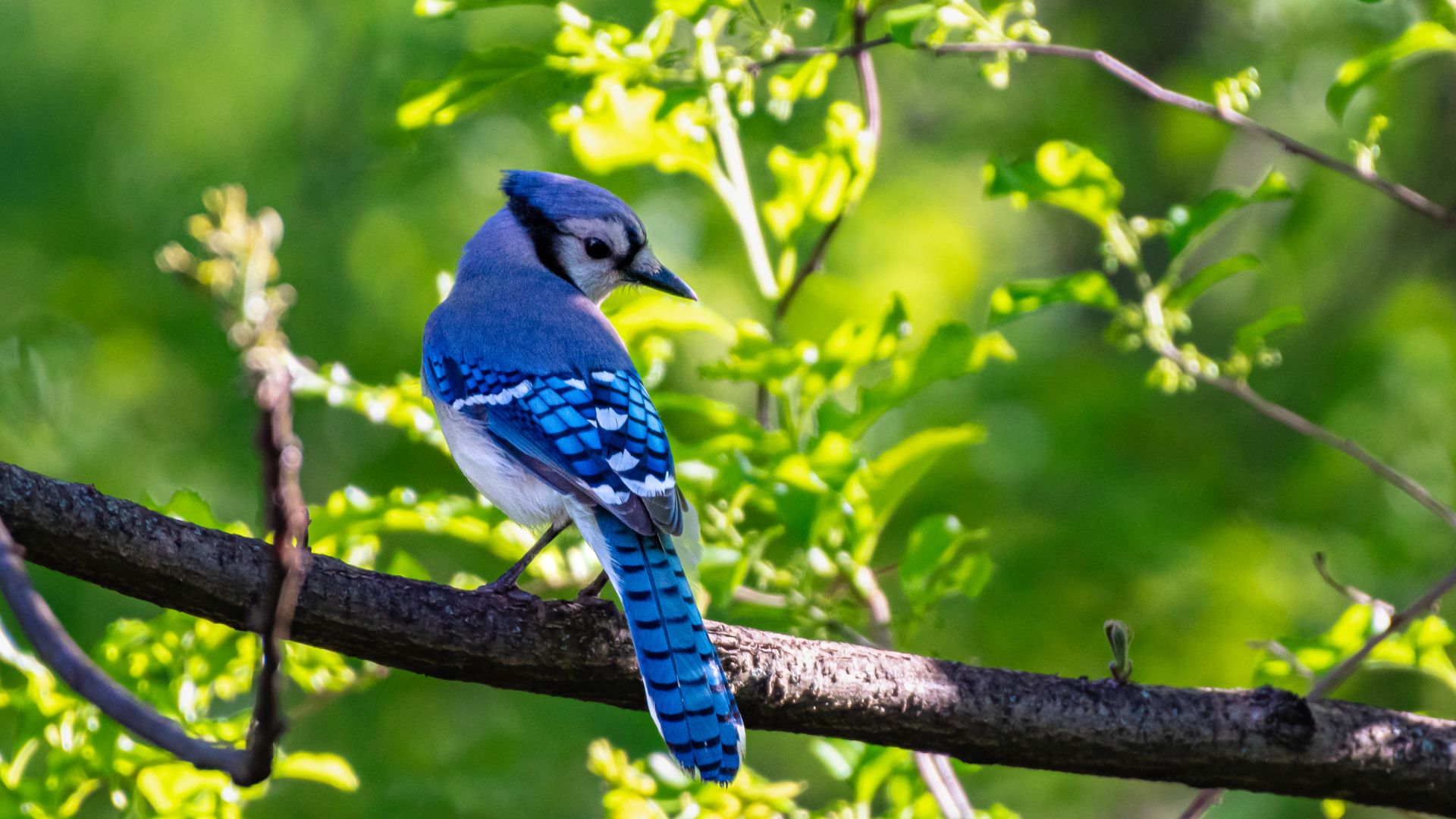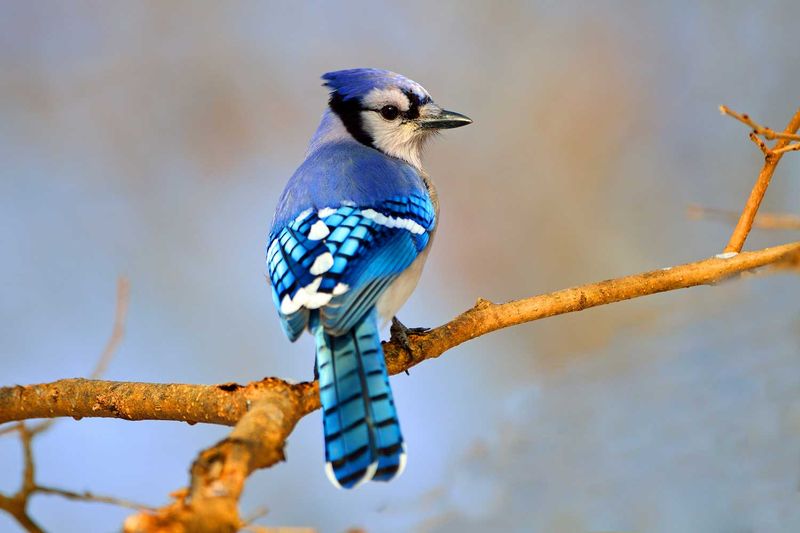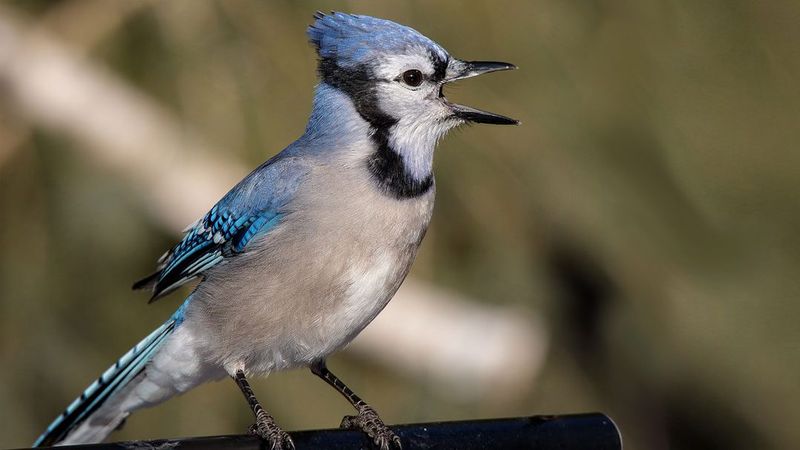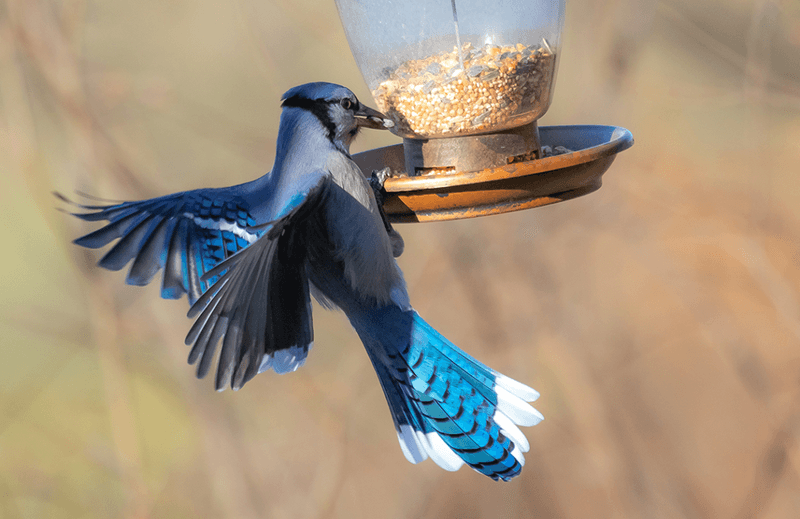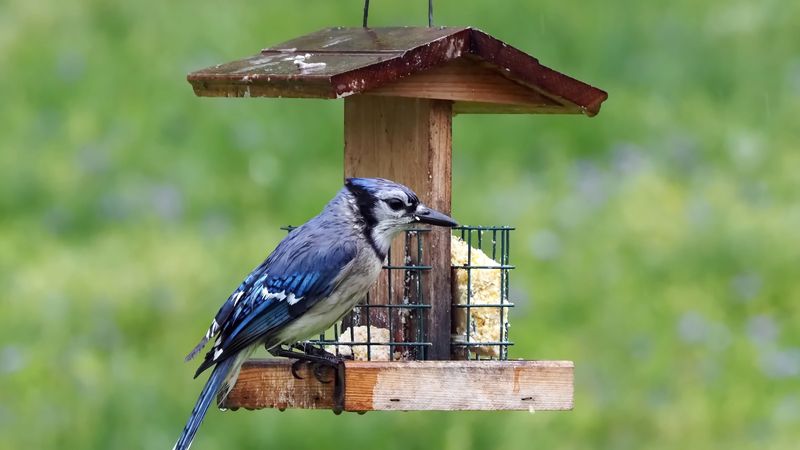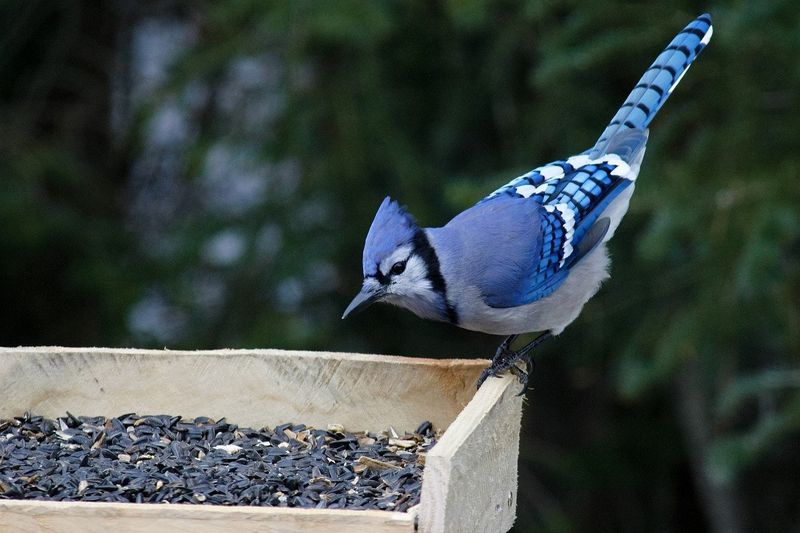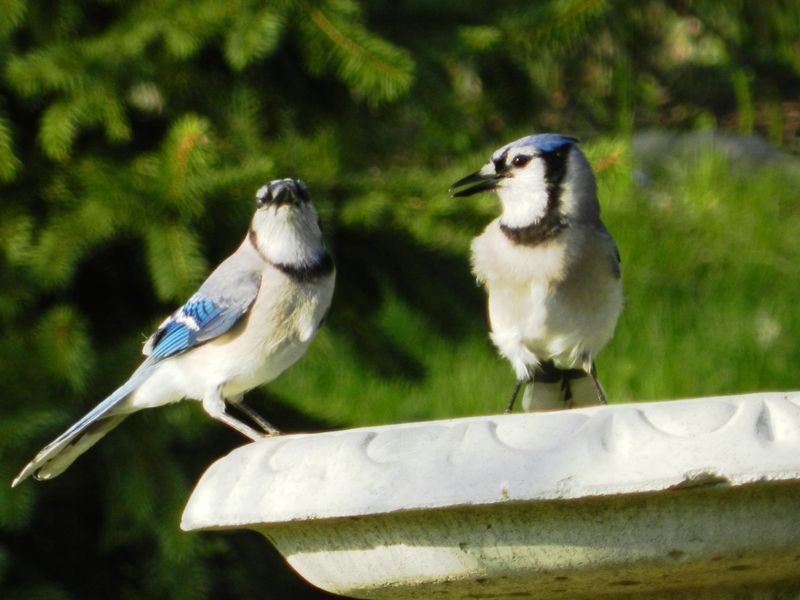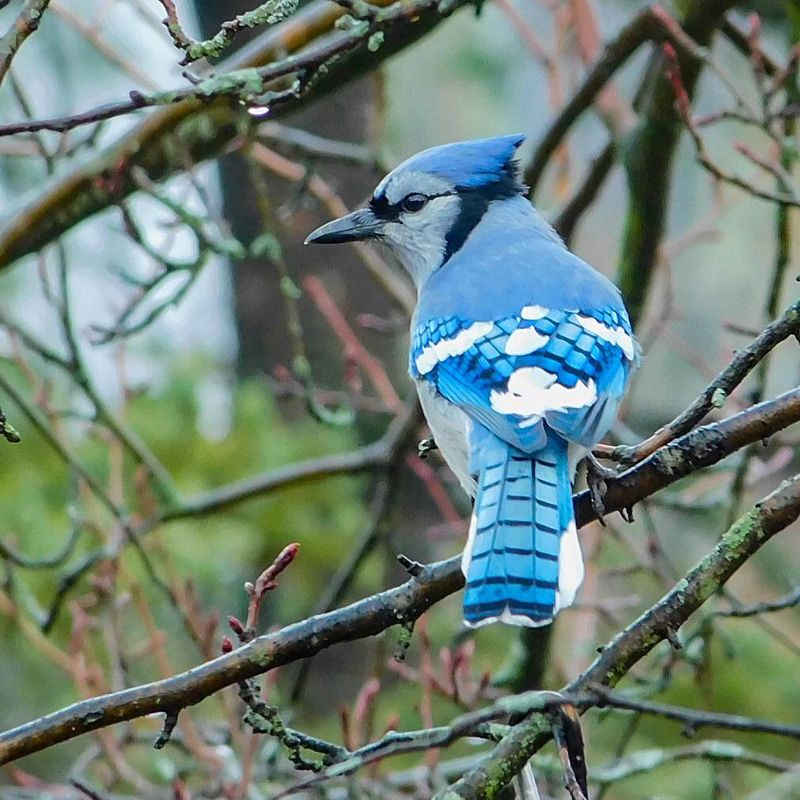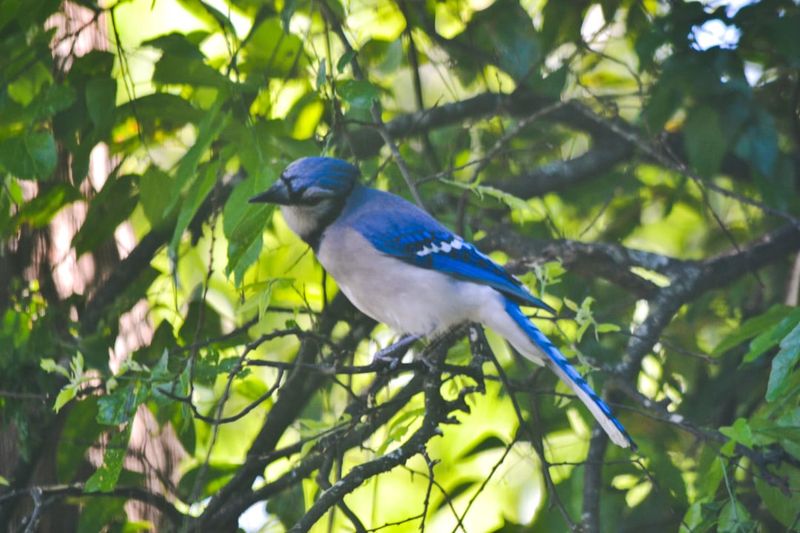Blue Jays are undeniably beautiful—those blue feathers and confident strut can catch your eye in an instant. I used to get excited every time one showed up near my feeder. But after a few seasons, I realized that inviting Blue Jays into your garden isn’t always the peaceful dream you imagine.
If you’re trying to create a calm, welcoming space for a variety of birds, you might want to think twice before actively attracting Blue Jays. I’m not saying they’re all bad—they’re smart, striking, and fascinating to watch—but they do come with some drama.
So, if you’re curious whether these birds are a good fit for your garden, here are some of the reasons you might want to pause before rolling out the welcome mat.
1. Aggressive Behavior
Blue Jays are notorious for their aggressive behavior, often chasing away smaller birds from feeders. They are known to dominate food sources, leaving little for others. Their territorial nature can make them unwanted guests in peaceful gardens.
This aggressiveness isn’t limited to feeders. Blue Jays are protective of their nests, often attacking perceived threats. This can include pets or even people who wander too close.
For those looking to attract a variety of bird species, Blue Jays might disrupt the balance. Their presence often means smaller, gentler birds stay away, reducing diversity.
2. Loud Calls
The call of a Blue Jay is loud and distinctive, making it easy to identify. However, this can be a nuisance if you enjoy a quiet garden.
Their calls can be heard throughout the day, disrupting the peace of a serene backyard. For those who love tranquil mornings or evenings, these vocal birds might not be ideal.
If you’re trying to create a relaxing outdoor space, the constant chatter of Blue Jays can be disruptive. They are known to mimic other birds and sounds, which can add to the noise level.
3. Dominance At Feeders
Blue Jays are often the bullies of bird feeders, using their size and assertiveness to monopolize the food. This can leave little to no resources for smaller birds.
Their dominance can alter the dynamics of your bird-watching experience. Instead of a variety of species, you may find your feeder overtaken by these birds.
Creating a balanced bird ecosystem becomes challenging with Blue Jays around. They tend to scare off timid birds, making it harder to maintain a diverse and harmonious garden environment.
4. Potential Damage To Plants
Blue Jays are curious creatures, often pecking at plants and gardens. This can lead to damage, especially if they’re searching for insects or seeds.
Gardeners may find their carefully tended plants with holes or broken branches. This behavior can be frustrating for those who take pride in their green spaces.
The destructive tendencies of Blue Jays might mean more maintenance work for garden enthusiasts. Their search for food or nesting materials can result in an unintended garden makeover.
5. Stealing Eggs And Nestlings
One lesser-known fact about Blue Jays is their habit of raiding nests. They have been observed stealing eggs and even young nestlings from other birds.
This predatory behavior can significantly impact local bird populations. Those hoping to foster a safe environment for nesting birds may find Blue Jays disruptive.
Encouraging Blue Jays might inadvertently lead to a decrease in songbird numbers. Their opportunistic feeding can have ripple effects on the local ecosystem, affecting bird diversity.
6. Scaring Away Smaller Birds
The presence of Blue Jays often intimidates smaller birds. Their size and assertiveness can scare away more timid species.
For bird enthusiasts who enjoy watching a variety of species, this can be disappointing. Blue Jays’ dominance means fewer diverse bird sightings in your garden.
Balancing bird populations becomes challenging when Blue Jays take over. They tend to monopolize resources, leaving little room for smaller birds to thrive.
7. Messy Eaters
Blue Jays are not the tidiest of eaters. They often scatter seeds and create a mess around bird feeders.
This mess can attract unwanted pests, like rodents, to your yard. It also means more cleanup for those maintaining feeders.
For those who prefer an orderly garden, the feeding habits of Blue Jays might be frustrating. Their tendency to fling seeds can quickly turn a tidy space into a messy one.
8. Guarding Territory Aggressively
Territorial behavior is a hallmark of Blue Jays. They guard their space fiercely, often chasing away intruders.
This can include not just other birds but sometimes pets and humans. Their boldness can be intimidating in a quiet yard.
If you’re hoping for a peaceful coexistence of wildlife, Blue Jays might pose a challenge. Their constant vigilance and defense tactics can disrupt the harmony of your outdoor space.
9. Potential Allergy Trigger
Some people may experience allergic reactions to Blue Jays, though it’s not common. Their feathers or droppings can be potential irritants.
For those with sensitivities, the presence of these birds might lead to discomfort. It’s something to consider if you or family members have allergies.
Creating a backyard haven should include ensuring it’s safe for everyone. Considering potential allergy triggers is part of maintaining a comfortable environment.
10. Disruption Of Nesting Birds
Blue Jays are known for disrupting the nests of other birds. They may interfere with nesting activities, causing stress for other species.
This behavior can lead to a decline in local bird populations. For those encouraging nesting birds, Blue Jays might be counterproductive.
Keeping a diverse bird population is challenging with Blue Jays. Their interference can have long-lasting effects on the local ecosystem’s balance.
11. Food Theft And Hoarding
Blue Jays are skilled at food theft, often taking advantage of easy meals. They are also known to hoard food for later.
This behavior can lead to a scarcity of resources for other birds. It can be frustrating for those trying to provide for a variety of species.
Their habit of stealing and storing food can disrupt the natural balance of your garden. It might mean fewer resources available for other wildlife.
12. Impact On Local Wildlife
Blue Jays can significantly impact local wildlife dynamics. Their presence often means a shift in the balance of species.
For those looking to support a wide range of animals, Blue Jays might pose a challenge. Their dominance can limit the variety of creatures you see.
Maintaining a healthy ecosystem requires careful consideration of all species present. Blue Jays’ influence on local wildlife should not be underestimated.
13. Potential For Disease Spread
Like many birds, Blue Jays can carry diseases that might spread to other wildlife or even humans.
Their droppings and interactions with feeders can be potential vectors. This is a concern for those maintaining clean and healthy gardens.
Awareness of disease potential is important for anyone attracting wildlife. It’s essential to keep feeders clean and monitor for any signs of illness among birds.
14. Nest Aggression
Blue Jays are fiercely protective of their nests. This can lead to aggressive interactions with other wildlife and even humans.
For those with children or pets, this behavior might be concerning. It’s important to consider the safety of family members when attracting birds.
Creating a welcoming yard should include peaceful interactions. Blue Jays’ nest aggression can disrupt this harmony, causing stress for those nearby.
15. Cheeky And Mischievous Behavior
Blue Jays are intelligent and curious, often engaging in mischievous activities. They might steal shiny objects or play with garden items.
While this behavior can be amusing, it can also be frustrating for gardeners. Their antics might lead to misplaced tools or disrupted plant arrangements.
For those who prefer a tidy and orderly space, the playful nature of Blue Jays might be a nuisance. Their curiosity can lead to unexpected challenges in maintaining your garden.

